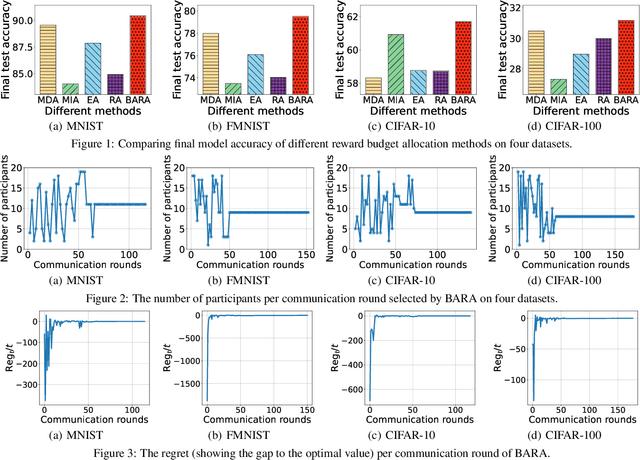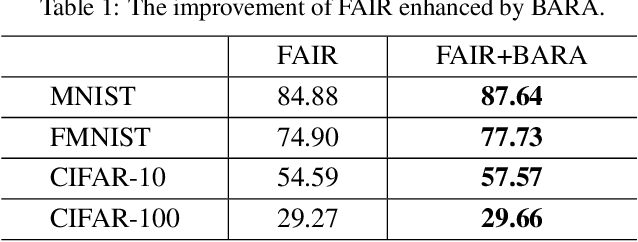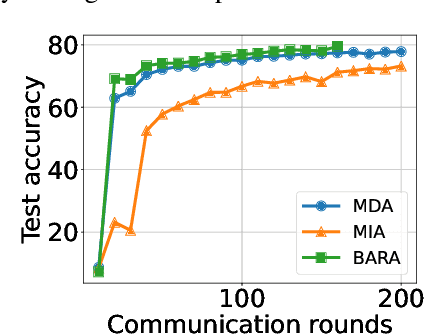Miao Hu
ChangingGrounding: 3D Visual Grounding in Changing Scenes
Oct 16, 2025Abstract:Real-world robots localize objects from natural-language instructions while scenes around them keep changing. Yet most of the existing 3D visual grounding (3DVG) method still assumes a reconstructed and up-to-date point cloud, an assumption that forces costly re-scans and hinders deployment. We argue that 3DVG should be formulated as an active, memory-driven problem, and we introduce ChangingGrounding, the first benchmark that explicitly measures how well an agent can exploit past observations, explore only where needed, and still deliver precise 3D boxes in changing scenes. To set a strong reference point, we also propose Mem-ChangingGrounder, a zero-shot method for this task that marries cross-modal retrieval with lightweight multi-view fusion: it identifies the object type implied by the query, retrieves relevant memories to guide actions, then explores the target efficiently in the scene, falls back when previous operations are invalid, performs multi-view scanning of the target, and projects the fused evidence from multi-view scans to get accurate object bounding boxes. We evaluate different baselines on ChangingGrounding, and our Mem-ChangingGrounder achieves the highest localization accuracy while greatly reducing exploration cost. We hope this benchmark and method catalyze a shift toward practical, memory-centric 3DVG research for real-world applications. Project page: https://hm123450.github.io/CGB/ .
Is Attention Required for Transformer Inference? Explore Function-preserving Attention Replacement
May 29, 2025Abstract:While transformers excel across vision and language pretraining tasks, their reliance on attention mechanisms poses challenges for inference efficiency, especially on edge and embedded accelerators with limited parallelism and memory bandwidth. Hinted by the observed redundancy of attention at inference time, we hypothesize that though the model learns complicated token dependency through pretraining, the inference-time sequence-to-sequence mapping in each attention layer is actually ''simple'' enough to be represented with a much cheaper function. In this work, we explore FAR, a Function-preserving Attention Replacement framework that replaces all attention blocks in pretrained transformers with learnable sequence-to-sequence modules, exemplified by an LSTM. FAR optimize a multi-head LSTM architecture with a block-wise distillation objective and a global structural pruning framework to achieve a family of efficient LSTM-based models from pretrained transformers. We validate FAR on the DeiT vision transformer family and demonstrate that it matches the accuracy of the original models on ImageNet and multiple downstream tasks with reduced parameters and latency. Further analysis shows that FAR preserves the semantic token relationships and the token-to-token correlation learned in the transformer's attention module.
Towards Effective Federated Graph Foundation Model via Mitigating Knowledge Entanglement
May 19, 2025Abstract:Recent advances in graph machine learning have shifted to data-centric paradigms, driven by two emerging fields: (1) Federated graph learning (FGL) enables multi-client collaboration but faces challenges from data and task heterogeneity, limiting its practicality; (2) Graph foundation models (GFM) offer strong domain generalization but are usually trained on single machines, missing out on cross-silo data and resources. These paradigms are complementary, and their integration brings notable benefits. Motivated by this, we propose FedGFM, a novel decentralized GFM training paradigm. However, a key challenge is knowledge entanglement, where multi-domain knowledge merges into indistinguishable representations, hindering downstream adaptation. To address this, we present FedGFM+, an enhanced framework with two core modules to reduce knowledge entanglement: (1) AncDAI: A global anchor-based domain-aware initialization strategy. Before pre-training, each client encodes its local graph into domain-specific prototypes that serve as semantic anchors. Synthetic embeddings around these anchors initialize the global model. We theoretically prove these prototypes are distinguishable across domains, providing a strong inductive bias to disentangle domain-specific knowledge. (2) AdaDPP: A local adaptive domain-sensitive prompt pool. Each client learns a lightweight graph prompt capturing domain semantics during pre-training. During fine-tuning, prompts from all clients form a pool from which the GFM selects relevant prompts to augment target graph attributes, improving downstream adaptation. FedGFM+ is evaluated on 8 diverse benchmarks across multiple domains and tasks, outperforming 20 baselines from supervised learning, FGL, and federated GFM variants.
BGTplanner: Maximizing Training Accuracy for Differentially Private Federated Recommenders via Strategic Privacy Budget Allocation
Dec 04, 2024



Abstract:To mitigate the rising concern about privacy leakage, the federated recommender (FR) paradigm emerges, in which decentralized clients co-train the recommendation model without exposing their raw user-item rating data. The differentially private federated recommender (DPFR) further enhances FR by injecting differentially private (DP) noises into clients. Yet, current DPFRs, suffering from noise distortion, cannot achieve satisfactory accuracy. Various efforts have been dedicated to improving DPFRs by adaptively allocating the privacy budget over the learning process. However, due to the intricate relation between privacy budget allocation and model accuracy, existing works are still far from maximizing DPFR accuracy. To address this challenge, we develop BGTplanner (Budget Planner) to strategically allocate the privacy budget for each round of DPFR training, improving overall training performance. Specifically, we leverage the Gaussian process regression and historical information to predict the change in recommendation accuracy with a certain allocated privacy budget. Additionally, Contextual Multi-Armed Bandit (CMAB) is harnessed to make privacy budget allocation decisions by reconciling the current improvement and long-term privacy constraints. Our extensive experimental results on real datasets demonstrate that \emph{BGTplanner} achieves an average improvement of 6.76\% in training performance compared to state-of-the-art baselines.
Federated Continual Graph Learning
Nov 28, 2024



Abstract:In the era of big data, managing evolving graph data poses substantial challenges due to storage costs and privacy issues. Training graph neural networks (GNNs) on such evolving data usually causes catastrophic forgetting, impairing performance on earlier tasks. Despite existing continual graph learning (CGL) methods mitigating this to some extent, they predominantly operate in centralized architectures and overlook the potential of distributed graph databases to harness collective intelligence for enhanced performance optimization. To address these challenges, we present a pioneering study on Federated Continual Graph Learning (FCGL), which adapts GNNs to multiple evolving graphs within decentralized settings while adhering to storage and privacy constraints. Our work begins with a comprehensive empirical analysis of FCGL, assessing its data characteristics, feasibility, and effectiveness, and reveals two principal challenges: local graph forgetting (LGF), where local GNNs forget prior knowledge when adapting to new tasks, and global expertise conflict (GEC), where the global GNN exhibits sub-optimal performance in both adapting to new tasks and retaining old ones, arising from inconsistent client expertise during server-side parameter aggregation. To tackle these, we propose the POWER framework, which mitigates LGF by preserving and replaying experience nodes with maximum local-global coverage at each client and addresses GEC by using a pseudo prototype reconstruction strategy and trajectory-aware knowledge transfer at the central server. Extensive evaluations across multiple graph datasets demonstrate POWER's superior performance over straightforward federated extensions of the centralized CGL algorithms and vision-focused federated continual learning algorithms. Our code is available at https://github.com/zyl24/FCGL_POWER.
Multi-diseases detection with memristive system on chip
Oct 18, 2024



Abstract:This study presents the first implementation of multilayer neural networks on a memristor/CMOS integrated system on chip (SoC) to simultaneously detect multiple diseases. To overcome limitations in medical data, generative AI techniques are used to enhance the dataset, improving the classifier's robustness and diversity. The system achieves notable performance with low latency, high accuracy (91.82%), and energy efficiency, facilitated by end-to-end execution on a memristor-based SoC with ten 256x256 crossbar arrays and an integrated on-chip processor. This research showcases the transformative potential of memristive in-memory computing hardware in accelerating machine learning applications for medical diagnostics.
FedTAD: Topology-aware Data-free Knowledge Distillation for Subgraph Federated Learning
Apr 25, 2024



Abstract:Subgraph federated learning (subgraph-FL) is a new distributed paradigm that facilitates the collaborative training of graph neural networks (GNNs) by multi-client subgraphs. Unfortunately, a significant challenge of subgraph-FL arises from subgraph heterogeneity, which stems from node and topology variation, causing the impaired performance of the global GNN. Despite various studies, they have not yet thoroughly investigated the impact mechanism of subgraph heterogeneity. To this end, we decouple node and topology variation, revealing that they correspond to differences in label distribution and structure homophily. Remarkably, these variations lead to significant differences in the class-wise knowledge reliability of multiple local GNNs, misguiding the model aggregation with varying degrees. Building on this insight, we propose topology-aware data-free knowledge distillation technology (FedTAD), enhancing reliable knowledge transfer from the local model to the global model. Extensive experiments on six public datasets consistently demonstrate the superiority of FedTAD over state-of-the-art baselines.
FedDWA: Personalized Federated Learning with Online Weight Adjustment
May 16, 2023Abstract:Different from conventional federated learning, personalized federated learning (PFL) is able to train a customized model for each individual client according to its unique requirement. The mainstream approach is to adopt a kind of weighted aggregation method to generate personalized models, in which weights are determined by the loss value or model parameters among different clients. However, such kinds of methods require clients to download others' models. It not only sheer increases communication traffic but also potentially infringes data privacy. In this paper, we propose a new PFL algorithm called \emph{FedDWA (Federated Learning with Dynamic Weight Adjustment)} to address the above problem, which leverages the parameter server (PS) to compute personalized aggregation weights based on collected models from clients. In this way, FedDWA can capture similarities between clients with much less communication overhead. More specifically, we formulate the PFL problem as an optimization problem by minimizing the distance between personalized models and guidance models, so as to customize aggregation weights for each client. Guidance models are obtained by the local one-step ahead adaptation on individual clients. Finally, we conduct extensive experiments using five real datasets and the results demonstrate that FedDWA can significantly reduce the communication traffic and achieve much higher model accuracy than the state-of-the-art approaches.
BARA: Efficient Incentive Mechanism with Online Reward Budget Allocation in Cross-Silo Federated Learning
May 16, 2023



Abstract:Federated learning (FL) is a prospective distributed machine learning framework that can preserve data privacy. In particular, cross-silo FL can complete model training by making isolated data islands of different organizations collaborate with a parameter server (PS) via exchanging model parameters for multiple communication rounds. In cross-silo FL, an incentive mechanism is indispensable for motivating data owners to contribute their models to FL training. However, how to allocate the reward budget among different rounds is an essential but complicated problem largely overlooked by existing works. The challenge of this problem lies in the opaque feedback between reward budget allocation and model utility improvement of FL, making the optimal reward budget allocation complicated. To address this problem, we design an online reward budget allocation algorithm using Bayesian optimization named BARA (\underline{B}udget \underline{A}llocation for \underline{R}everse \underline{A}uction). Specifically, BARA can model the complicated relationship between reward budget allocation and final model accuracy in FL based on historical training records so that the reward budget allocated to each communication round is dynamically optimized so as to maximize the final model utility. We further incorporate the BARA algorithm into reverse auction-based incentive mechanisms to illustrate its effectiveness. Extensive experiments are conducted on real datasets to demonstrate that BARA significantly outperforms competitive baselines by improving model utility with the same amount of reward budget.
Edge-Based Video Analytics: A Survey
Mar 25, 2023



Abstract:Edge computing has been getting a momentum with ever-increasing data at the edge of the network. In particular, huge amounts of video data and their real-time processing requirements have been increasingly hindering the traditional cloud computing approach due to high bandwidth consumption and high latency. Edge computing in essence aims to overcome this hindrance by processing most video data making use of edge servers, such as small-scale on-premises server clusters, server-grade computing resources at mobile base stations and even mobile devices like smartphones and tablets; hence, the term edge-based video analytics. However, the actual realization of such analytics requires more than the simple, collective use of edge servers. In this paper, we survey state-of-the-art works on edge-based video analytics with respect to applications, architectures, techniques, resource management, security and privacy. We provide a comprehensive and detailed review on what works, what doesn't work and why. These findings give insights and suggestions for next generation edge-based video analytics. We also identify open issues and research directions.
 Add to Chrome
Add to Chrome Add to Firefox
Add to Firefox Add to Edge
Add to Edge